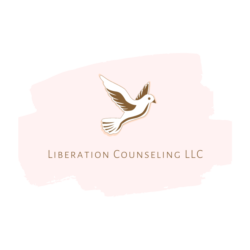Trauma and PTSD
What is Trauma?
Trauma is an emotional and physical response to a distressing event or a situation that makes you feel unsafe and isolated. We can have little t traumas and big T traumas. Little t traumas are events that disrupt our ability to cope and are distressing but not life-threatening such as divorce, financial struggle, and interpersonal conflict. Big T traumas are events where we feel helpless and powerless and are life-threatening or extraordinary. Big T traumas are things like natural disasters, assaults, abuse, or car accidents.
What is PTSD?
Post-traumatic stress disorder (PTSD) is a psychological disorder that develops after experiencing a traumatic event. Complex PTSD can occur if you have experienced multiple traumatic events. It is normal to experience these symptoms during and after a traumatic event. The issue becomes when these symptoms continue to disrupt your everyday functioning. PTSD can look different for everyone and can lay dormant until they are triggered and last in the form of episodes where your body remains activated until the stress cycle completes itself.

The Stress Cycle
When we experience trauma it is harder for us to cope with everyday stress and we are more likely to become triggered and detect danger and threats. Stress and toxic stress is something that is ingrained in our society, communities, environments, and systems. Below is a diagram of the stress cycle to help better understand what happens when we experience a trigger.

Traumatic Stress and PTSD Symptoms
- Re-experiencing the trauma through nightmares and flashbacks
- Emotional numbness
- Heightened arousal – trouble sleeping, difficulty concentrating, feeling jumpy, irritable
- Avoidance
- Dissociation
- Derealization and Depersonalization
- Fight, flight, fawn, or freeze responses
- Panic attacks
- Anxiety
- Fear
Other Signs of Unhealed Trauma
- Hyper-independence
- People pleasing
- Perfectionism
- Difficulty trusting others
- Difficulty setting boundaries
- Difficulty with self-advocacy
- Physical symptoms such as body pain, immune disorders, and digestion issues without medical explanation
Trauma and the Brain (Survival Skills)
Trauma affects our brain and blocks our brain’s adaptive information processing system. Just like our bodies have ways of physically healing wounds so does our brain. However, if we are consistently exposed to trauma our brain’s natural ability to recover shrinks which means our brains need extra support to work through that process. When we are experiencing PTSD symptoms our system is overreacting to ordinary situations as if we were still experiencing the traumatic event. Let’s look at trauma and its effects on the prefrontal cortex, amygdala, and hippocampus.
Prefrontal Cortex: Rational thinking; regulates emotions such as fear responses from the amygdala. This part of the brain acts as a reset button to return the body to a normal state after the threat is gone. During trauma, the prefrontal cortex slows down while the amygdala speeds up creating the fight or flight response, inhibiting thinking and reasoning.
Amygdala: Wired for survival, and the brain’s stress response. Traumatic stress can cause the amygdala to become hyperactive where it constantly releases stress hormones such as adrenaline to our body causing us to feel fearful and hypervigilent.
Hippocampus: Responsible for memory and differentiating between past and present. The hippocampus also tries to remember and make sense of the trauma. With consistent trauma exposure, it shrinks which affects our memory recall and emotional regulation
Remember your brain and body are designed to protect you from threats. Consider this a positive trait our brains possess. Sometimes our brains may need help understanding that we are safe again and permission to send that message to the rest of our bodies.
Trauma and Memories
Once we experience a traumatic event our brain stores it as a memory. Memories are powerful and can form the foundation for our perceptions, behaviors, emotional responses, and beliefs about ourselves and the world. This means memories become a part of our bodies and how we act, think, feel, and process.
It is theorized that trauma symptoms come from unprocessed trauma memories which can include having a negative sense of self, emotions, and behaviors. We call these maladaptive memory networks in the field. However, the more appropriate antioppressive language knows these as survival skills.
The good news is we have an adaptive processing system and memory network stored in our brains too. This system is where we store our positive memories and experiences and forms the basis of our positive feelings, self-esteem, and behaviors.
The goal of trauma healing is to be able to move from dysregulation to regulation with more ease where we do not attach a story or hurtful beliefs to the dysregulation. Where we can adapt and process while staying connected to our bodies.
Somatic Experiencing and Trauma Healing
The body keeps the score and trauma can separate us from our mind-body connection. Somatic experiencing therapy helps us connect back to our bodies safely and learn how to listen to our sensations and emotions as sources of information instead of things to manage. This allows space for people to explore their traumas, negative thoughts, beliefs, and emotions with safety and intention. Somatic therapy includes using breathwork, movement, bilateral stimulation, and guided meditation to encourage embodiment and adaptive processing.
Self-Compassion and Trauma Healing
We are forced in modern society to hate, mistrust, and neglect our bodies which further inhibits our ability to connect with our traumatized parts. Trauma therapy helps you access the trauma memories that have been stored in your brain and body and transform them through reprocessing and unblocking methods. These methods guide you in your ability to reconcile with those active trauma memories and create greater insight and integration of new ways to relate/understand your emotional and physical symptoms associated with the trauma while learning new coping skills.
Self-compassion is a key part of the reconciliation process where we allow room for our shame and guilt without punishment. Where we give ourselves grace. In turn, this helps boost our self-esteem and creates an empowered sense of self.
Holding Compassion for Our Traumatized Parts and Past Coping Mechanisms
When we show ourselves kindness and love as corny as it sounds we give our traumatized parts space to be witnessed. This includes our past coping skills and behaviors. When we hold compassion and lead with curiosity about why we do what we do we can better understand ourselves and our traumas. We can begin to view past self-harm, addiction, isolation, and defensiveness as survival skills that protected us during difficult times. This allows space for new coping skills that better serve us to form and grow while we slowly shed the survival skills that are no longer needed.

